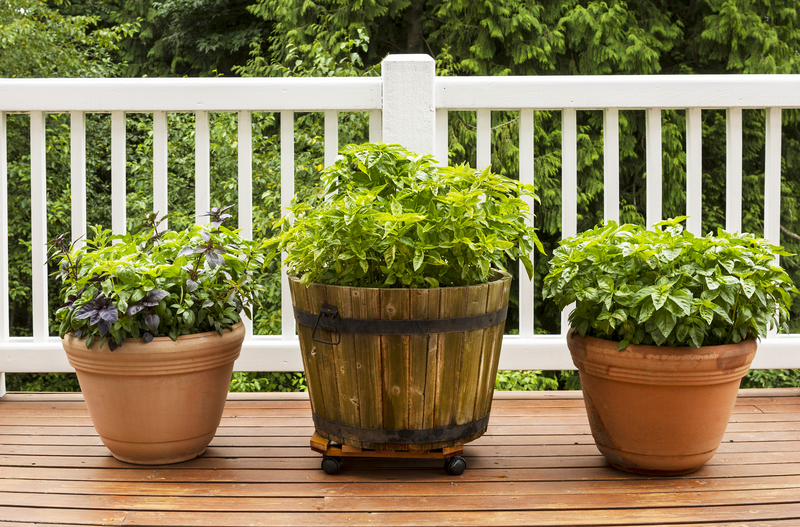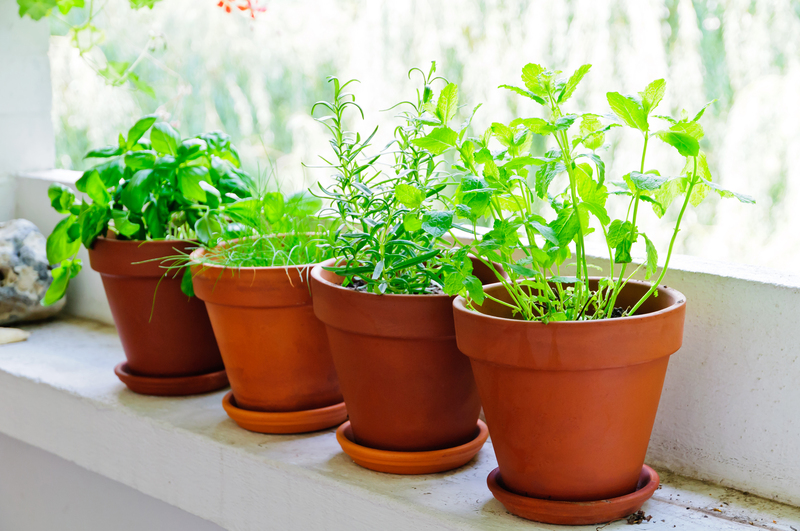Essential Steps to Protect Your Garden during Adverse Weather
Posted on 14/08/2025
Essential Steps to Protect Your Garden during Adverse Weather
Gardening is a rewarding pursuit, but every gardener knows that adverse weather can be a persistent threat to even the most carefully tended green spaces. Unpredictable weather patterns--from sudden frosts to torrential rain, heatwaves, and fierce storms--can wreak havoc on your plants and soil. Therefore, having a comprehensive strategy for protecting your garden during adverse weather is crucial. This guide offers practical, actionable steps to help you safeguard your garden against the elements, ensuring it thrives season after season.
Why Is It Important to Protect Your Garden from Harsh Weather?
Adverse weather poses several risks to your garden:
- Plant Loss: Extreme temperatures, heavy winds, or excess water can kill young and mature plants alike.
- Soil Damage: Heavy rain or wind can erode topsoil and deplete nutrients, undermining plant health long-term.
- Structural Deterioration: Storms and adverse climates can degrade fences, trellises, raised beds, and other garden infrastructure.
- Pest Invasion: Certain weather events can lead to a spike in pest populations, further stressing garden ecosystems.

Early Preparation: The First Line of Defense
Monitor Weather Forecasts and Trends
Stay informed about upcoming weather patterns by:
- Checking reliable weather websites or local news updates regularly.
- Installing gardening apps that alert you to frost, storms, or excessive rain.
- Observing microclimates in your own yard, which may differ from broader forecasts.
Choose Resilient Plants and Strategic Placement
Select plant species that are well-suited to your region's climate. Pay attention to:
- Disease and drought resistance characteristics.
- Planting tender species in protected microclimates or near building walls for extra shelter.
- Children plants before the most likely adverse weather strikes (e.g., sowing after late frosts).
Specific Garden Protection Tips for Different Weather Types
Protecting Your Garden During Frost and Cold Snaps
Frost and cold temperatures are notorious for damaging tender plants. Here's how to shield your garden from cold weather:
- Cover Plants: Use frost cloths, old bed sheets, or burlap to wrap delicate plants overnight. Remove covers in the morning once temperatures rise.
- Mulch Generously: Apply thick layers of straw, leaves, or bark around plant bases to insulate roots and retain soil warmth.
- Water Before Frost: Moist soil retains heat better than dry soil. Water your garden in anticipation of a cold snap.
- Use Cloches or Mini Greenhouses: Install plastic or glass bells over vulnerable plants. DIY options, like cut-off plastic bottles, can be effective.
- Bring Potted Plants Indoors: Move containers inside or to sheltered garages and porches to keep them out of direct cold exposure.
These techniques are essential for frost protection in gardens and can be the difference between losing plants and helping them thrive until spring.
How to Safeguard Your Garden during Heavy Rain and Flood
Excessive rainfall can lead to waterlogged soil, poor aeration, root rot, and erosion. Here are methods to minimize damage:
- Improve Drainage: Elevate beds, use raised planters, or amend soil with organic matter and sand to improve percolation.
- Install Rain Barrels: Divert excess run-off from roofs safely away from your garden beds.
- Add Mulch: Mulching helps absorb and slow water flow, reducing compaction and soil loss.
- Avoid Walking on Wet Soil: Compacted, saturated soil is easily damaged; use stepping stones or planks if you must enter the garden.
- Direct Runoff: Dig shallow ditches or install French drains to channel excess water safely away from plant roots.
Adapting your garden for heavy rain ensures plants avoid drowning and facilitates an environment where roots can quickly bounce back after storms.
Defending Your Garden Against Strong Winds and Storms
Storms and winds can devastate an otherwise healthy garden. Some key protective strategies include:
- Install Windbreaks: Erect fences, lattice screens, or strategically plant hedges to reduce wind speed and shield vulnerable plants.
- Stake and Support: Anchor tall or top-heavy plants with stakes or cages to prevent uprooting or breakage.
- Secure Garden Structures: Check that greenhouses, sheds, and trellises are firmly fixed. Consider anchoring lightweight structures more securely before storms.
- Remove Dead/Damaged Plant Material: Prune broken branches or diseased plants that could become hazards in high winds.
- Bring Loose Items Inside: Store pots, tools, and lightweight decorations in a sheltered spot to prevent them from blowing away.
These measures help maintain garden integrity during storms and minimize repair and replacement costs.
Keeping Your Garden Safe During Heatwaves and Drought
Extreme heat and prolonged dry spells present their own set of challenges:
- Water Deeply and Early: Irrigate your garden in the early morning to minimize evaporation. Target the root zone for best results.
- Mulch for Moisture Retention: Apply organic mulch thickly to keep soil cool and prevent surface evaporation.
- Provide Shade: Erect temporary shade structures with shade cloth or even an old sheet during the hottest part of the day to protect sensitive plants.
- Reduce Feeding: Hold off on applying fertilizers during intense heat periods to avoid 'burning' plants and over-stimulating tender growth.
- Choose Drought-Tolerant Plants: Incorporate native species and succulents that withstand dry conditions.
Effective garden care during heatwaves means less stress on your plants and better yields when the heat recedes.
Year-Round Garden Weather Protection: Building Resilience
Soil Health and Structure
A garden is only as healthy as its soil. To build long-term resilience against adverse weather:
- Regularly amend your soil with compost, aged manure, and organic material for better structure and nutrient retention.
- Practice crop rotation and cover-cropping to maintain fertility and microbial health.
- Mulch consistently throughout the year, which insulates soil, conserves moisture, and prevents both extreme cold and heat damage.
Water Conservation and Management
Water is both an asset and a risk in the garden. Effective water management includes:
- Installing a smart irrigation system or scheduling hand-watering for efficiency and drought preparedness.
- Setting up rain gardens or swales to capture and utilize stormwater during wet spells.
Monitoring for Pests and Diseases after Weather Events
Unusual weather often leads to increased pest activity or stress-related plant diseases. To protect your garden:
- Inspect plants regularly following storms, heatwaves, or cold snaps for signs of infestation or decay.
- Remove debris promptly to prevent pests from establishing new colonies.
- Use natural pest control measures like neem oil, insecticidal soap, or encouraging beneficial insects.
Emergency Garden Protection Checklist
Every gardener should have quick, effective tools and supplies on hand for emergency weather protection. Keep these ready:
- Frost cloths and old sheets for immediate plant covering
- Mulch materials (straw, leaves, bark) in bags or bins
- Stakes, string, plant ties for stabilizing top-heavy plants
- Portable shade cloths or old curtains to quickly deploy during heatwaves
- Rain barrels and buckets to redirect or collect water as needed
- Pruners and loppers for rapid branch removal after storms
- Garden gloves and boots for safe post-storm clean-up

Frequently Asked Questions about Garden Weather Protection
How often should I check weather updates during the growing season?
It's wise to monitor weather forecasts daily during active growing months. Investing a few minutes each evening can help you prepare covers or adjust watering well in advance, safeguarding your garden from sudden weather shifts.
What is the best mulch type for severe weather protection?
*Organic mulches* such as straw, shredded leaves, grass clippings, and bark chips provide superior insulation against both heat and cold, reduce erosion during heavy rains, and foster healthier soil microbes for long-term resilience.
Is it safe to prune storm-damaged trees and shrubs immediately?
Yes, prune broken branches promptly to prevent further injury and disease. Use sharp, sterilized tools and cut back to a healthy node. For severe damage, consult a certified arborist.
Should I fertilize after periods of adverse weather?
Wait until plants show signs of recovery before fertilizing. Applying nutrients to stressed or damaged plants can further shock them. Focus first on soil structure and hydration before feeding.
Conclusion: Safeguard Your Garden Year-Round
Nature's extremes--from freezes and storms to heatwaves and droughts--demand proactive and flexible gardening techniques. By adopting the steps outlined above, from advanced preparation to specific weather response techniques and year-round resilience building, you can enjoy a healthy and beautiful garden regardless of what Mother Nature throws your way.
Remember, the keys to protecting your garden from adverse weather are vigilance, proper planning, and responsive care. Review these strategies regularly, adjust them to your local climate, and your garden will flourish season after season--come rain, wind, frost, or shine.



